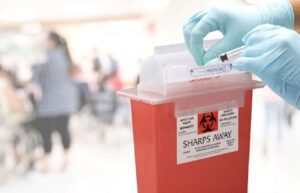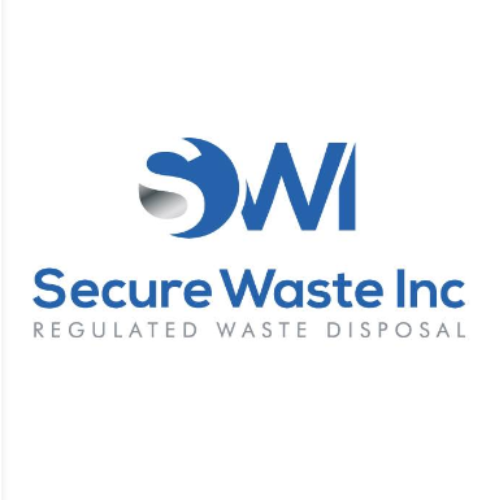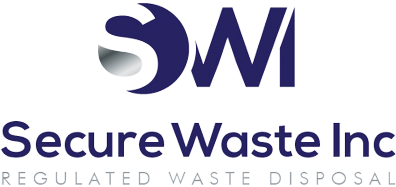Medical waste management is a vital aspect of maintaining public health and environmental safety. This type of waste, generated from healthcare activities, must be handled and disposed of properly to mitigate potential risks. In this comprehensive article, we explore the various types of medical waste, their characteristics, potential hazards, and best practices for disposal.
The goal is to provide expert-level insight while maintaining clarity and readability, ensuring that healthcare professionals and waste management personnel understand the importance of responsible waste handling.
What is Medical Waste?

Medical waste encompasses all waste materials produced as a result of healthcare activities, including diagnosis, treatment, immunization, and research. These materials can range from innocuous items to highly hazardous substances. Proper classification and management of medical waste are crucial to minimizing the risk of contamination, infection, and environmental damage.
The Importance of Proper Medical Waste Management
The consequences of improper medical waste disposal can be severe, including the spread of diseases, injuries to healthcare workers, and environmental pollution. According to the World Health Organization (WHO), an estimated 15% of all waste generated by healthcare activities is considered hazardous, potentially infectious, toxic, or radioactive, posing significant health and environmental risks if improperly managed. Effective waste management reduces these risks and ensures that healthcare facilities comply with regulations set by local and international health bodies.
Types of Medical Waste
Medical waste is categorized into different types, each with unique handling and disposal requirements. Here, we delve into the main types of medical waste, providing examples and best practices for their management.
Infectious Waste
Infectious waste is material that has been in contact with bodily fluids or pathogens capable of causing disease. This type of waste poses a significant risk to healthcare workers and sanitation staff if mishandled. Examples include:
- Blood-soaked dressings and bandages
- Used surgical gloves and face masks
- Contaminated surgical instruments and laboratory cultures
Risks: Handling infectious waste without proper protocols can result in the transmission of diseases such as HIV, hepatitis, and other bloodborne pathogens.
Best Practices for Disposal:
- Collection: Infectious waste should be collected in designated, clearly labeled biohazard containers.
- Treatment: Sterilize the waste using autoclaves or subject it to high-temperature incineration to neutralize pathogens.
Sharps Waste
Sharps waste comprises items that can puncture or cut the skin, potentially transmitting infectious diseases. This type of waste requires particular attention to ensure the safety of all personnel involved in waste management. Examples include:
- Used needles and syringes
- Scalpel blades and lancets
- Broken glass vials or laboratory equipment
Risks: Sharps waste can lead to needlestick injuries, which carry the risk of transmitting serious infections to healthcare professionals and waste handlers.
Best Practices for Disposal:
- Collection: Dispose of sharps in puncture-proof, leak-resistant containers marked with a biohazard symbol.
- Treatment: Sterilize the containers before incineration or chemical disinfection.
Pathological Waste
Pathological waste consists of human or animal body parts, tissues, and organs removed during surgical procedures or autopsies. Common examples include:
- Amputated limbs
- Biopsy specimens
- Animal carcasses from research laboratories
Risks: Pathological waste, if not handled correctly, can spread infectious diseases and contaminate the environment.
Best Practices for Disposal:
- Storage: Use airtight, leak-proof containers to prevent leakage and odor.
- Treatment: Incineration is the preferred method for disposing of pathological waste, ensuring the complete destruction of potentially harmful materials.
Chemical Waste
Chemical waste is generated from the use of chemicals in healthcare settings and can include both hazardous and non-hazardous materials. Examples include:
- Disinfectants, solvents, and cleaning agents
- Laboratory reagents and expired chemical solutions
- Mercury from broken thermometers or sphygmomanometers
Risks: Exposure to chemical waste can cause acute and chronic health issues, such as chemical burns, respiratory problems, and poisoning. Additionally, improper disposal of chemical waste can contaminate soil and water sources, leading to widespread environmental harm.
Best Practices for Disposal:
- Segregation: Separate chemical waste based on its chemical properties (e.g., acids, bases, flammables).
- Treatment: Follow neutralization procedures for acids and alkalis or use specialized chemical disposal companies for safe processing.
Pharmaceutical Waste
Pharmaceutical waste consists of unused, expired, or contaminated drugs and medications. Examples include:
- Expired antibiotics and chemotherapy drugs
- Contaminated IV bags and drug vials
- Unused vaccine doses
Risks: Inadequate disposal of pharmaceutical waste can lead to drug resistance, harm to wildlife, and contamination of water bodies.
Best Practices for Disposal:
- Separation: Segregate pharmaceutical waste from general and other hazardous waste categories.
- Disposal Method: Use high-temperature incineration or other approved chemical treatment processes to neutralize pharmaceutical compounds.
Challenges in Medical Waste Management

Medical waste management involves complex challenges, including adherence to regulatory standards, the availability of resources, and the training of personnel. Let’s explore some of the critical issues:
Regulatory Compliance
Compliance with local and international regulations is a significant challenge for healthcare facilities. Organizations such as the World Health Organization (WHO) and regional environmental protection agencies have established guidelines for proper waste management. Failure to comply with these regulations can result in legal repercussions and pose serious health and environmental risks.
Resource Limitations
Many healthcare facilities, particularly in developing regions, face challenges related to limited resources for waste management. This can include insufficient infrastructure, inadequate training programs, and a lack of access to safe disposal methods.
Best Practice Solutions:
- Investment in Training: Regularly train staff to correctly handle and segregate medical waste.
- Innovative Technologies: Implement cost-effective, environmentally friendly waste treatment methods such as steam sterilization and plasma arc technology.
Global Regulations and Guidelines
Each country or region has its own regulatory framework for managing medical waste. Understanding and adhering to these regulations is essential for healthcare providers to ensure public health safety and environmental sustainability.
World Health Organization (WHO) Guidelines
The WHO provides international guidance on the safe management of healthcare waste. Its recommendations cover the proper segregation, collection, storage, transport, and treatment of waste.
Environmental Protection Agencies
Countries like the United States follow regulations set by their Environmental Protection Agency (EPA), which outlines the management and disposal of hazardous medical waste.
European Union Standards
The EU follows the Waste Framework Directive, which emphasizes the reduction, safe disposal, and recycling of medical waste.
Advanced Medical Waste Disposal Technologies

As the healthcare industry evolves, so do the technologies used to manage and dispose of medical waste. Implementing advanced disposal methods is crucial for minimizing health risks and protecting the environment. Below, we explore some of the most effective technologies used today.
Autoclaving
Autoclaving is a sterilization process that uses pressurized steam to neutralize infectious waste. It is highly effective for treating sharps, surgical waste, and other contaminated items.
- How it Works: Medical waste is placed in an autoclave where it is subjected to high-pressure steam at temperatures reaching up to 135°C (275°F).
- Benefits: Cost-effective and environmentally friendly compared to incineration. Autoclaving reduces the volume of waste, making disposal more manageable.
Incineration
Incineration is one of the most traditional methods for disposing of medical waste, particularly pathological, pharmaceutical, and some chemical waste.
- How it Works: Medical waste is burned at high temperatures (up to 1,200°C or 2,192°F), reducing it to ash and neutralizing harmful pathogens.
- Benefits: Efficient for waste that cannot be treated through other means, such as cytotoxic drugs and human tissues. It significantly decreases waste volume and ensures complete destruction.
- Drawbacks: High energy consumption and emissions can pose environmental challenges if not carefully managed with advanced filtration systems.
Microwave Treatment
Microwave treatment uses microwave energy to heat and disinfect medical waste.
- How it Works: Waste is shredded and mixed with water, then microwaved to produce steam that sterilizes the waste.
- Benefits: Environmentally friendly and effective for non-pathological waste. Reduces the risk of contamination and requires less energy than traditional incineration.
- Considerations: Not suitable for all types of medical waste, such as pharmaceutical or chemical waste.
Chemical Disinfection
Chemical disinfection is used for certain types of medical waste, including liquid waste such as blood and urine.
- How it Works: Waste is treated with chemical disinfectants such as chlorine compounds to neutralize pathogens.
- Benefits: Effective for specific types of waste that do not require high-temperature treatment.
- Drawbacks: The disposal of the chemical residue needs to be managed carefully to avoid environmental contamination.
Challenges with Specific Types of Medical Waste
Certain types of medical waste present unique challenges in terms of handling and disposal. Below, we highlight some of these complexities and suggest strategies for managing them effectively.
Cytotoxic and Hazardous Pharmaceutical Waste
Cytotoxic waste, which includes chemotherapy drugs and other hazardous pharmaceuticals, poses significant risks to healthcare workers and the environment.
- Challenges: Requires specialized handling and storage due to the toxic and carcinogenic nature of the waste.
- Strategies: Utilize sealed containers for collection, and dispose of waste through high-temperature incineration or specialized chemical neutralization methods.
Radioactive Waste
Radioactive waste generated from diagnostic and therapeutic procedures can have long-lasting environmental impacts if not managed properly.
- Challenges: Must be stored securely in lead-lined containers to prevent radiation exposure.
- Strategies: Adhere to strict regulatory guidelines, monitor waste through specialized equipment, and use licensed facilities for disposal.
Chemical Waste
Chemical waste can vary widely in its composition and hazard level, requiring distinct treatment protocols for safe disposal.
- Challenges: Identifying the specific chemical properties and determining the appropriate disposal method can be complex.
- Strategies: Implement clear labeling, use secondary containment for transport, and partner with certified hazardous waste management services.
Best Practices for Medical Waste Management
Maintaining a comprehensive medical waste management system requires a multi-faceted approach. Here are some best practices to ensure safety, compliance, and environmental responsibility:
Segregation at the Source
Proper waste segregation at the point of generation is essential to prevent contamination and simplify the disposal process.
- Method: Use color-coded containers to separate infectious waste from non-infectious waste, sharps from general waste, and hazardous chemical waste from other types.
Clear Labeling and Identification
Accurate labeling of medical waste ensures that it is handled properly throughout the disposal chain.
- Method: All containers should be marked with universal biohazard symbols and labels indicating the type of waste.
Training and Education
Continuous education for healthcare staff and waste management workers is crucial for effective medical waste handling.
- Method: Conduct regular workshops and training sessions to inform staff about new regulations, best practices, and safe disposal methods.
Regular Audits and Compliance Checks
Routine audits ensure that waste management practices align with local and international regulations.
- Method: Establish a compliance team to conduct scheduled checks and recommend improvements.
Emerging Trends in Medical Waste Management

The healthcare industry is adopting innovative practices and technologies to manage medical waste more sustainably. Some of the key trends include:
Eco-Friendly Disposal Methods
There is a growing shift toward green waste management solutions such as non-incineration technologies and energy recovery processes.
- Example: Pyrolysis and gasification are gaining traction as environmentally friendly alternatives to traditional incineration.
Digital Tracking Systems
Technological advancements have led to the implementation of digital systems for tracking medical waste from the point of generation to final disposal.
- Benefit: Increases transparency, improves compliance, and reduces the risk of mismanagement.
Medical waste management is a vital part of healthcare operations that demands meticulous attention to safety protocols and environmental regulations. By understanding the different types of medical waste and implementing best practices, healthcare facilities can significantly reduce risks to public health and the environment. Effective medical waste management not only ensures compliance with local and international guidelines but also fosters a culture of safety and sustainability.
Comprehensive waste management solutions, innovative technologies, and continuous staff training can help healthcare providers meet their obligations and maintain public trust. From autoclaving to microwave treatment and chemical disinfection, each method plays an integral role in the overall strategy for responsible waste handling. By staying informed and proactive, healthcare facilities can safeguard the well-being of their patients, staff, and surrounding communities.
FAQ
What are the most common types of medical waste in healthcare facilities?
Infectious waste, sharps waste, pathological waste, chemical waste, and pharmaceutical waste are some of the most common types found in healthcare settings.
How should sharps waste be disposed of to ensure safety?
Sharps waste should be collected in puncture-proof, leak-resistant containers that are clearly labeled with biohazard symbols and then treated through sterilization or incineration.
What are the main risks associated with improper medical waste disposal?
Improper disposal can lead to the spread of infectious diseases, injuries to healthcare workers, and environmental contamination, potentially impacting public health and wildlife.
What methods are considered eco-friendly for medical waste disposal?
Eco-friendly methods include autoclaving, microwave treatment, and non-incineration technologies like pyrolysis and gasification, which reduce environmental impact.
What global regulations guide the management of medical waste?
The World Health Organization (WHO) and regional bodies such as the Environmental Protection Agency (EPA) in the U.S. and the European Union’s Waste Framework Directive set standards for medical waste management.

Expert Medical Waste Management: With over 25 years of industry experience, Secure Waste is a trusted local leader in hazardous and biohazardous waste disposal across Maryland, Virginia, and Washington, D.C. Specializing in medical waste management, sharps needle disposal, and biohazard waste removal, the company ensures full compliance with federal, state, and local regulations while prioritizing environmental sustainability.
The company also offers additional services, including secure document shredding and sharps container sales, providing comprehensive solutions for healthcare facilities and businesses. Our cost-effective services help clients maintain regulatory compliance without unexpected costs.
With a commitment to customer satisfaction, Secure Waste offers tailored waste management plans that align with industry best practices. Their team of experts provides reliable, timely, and compliant services, making them the preferred choice for medical waste disposal. For a free waste quote or more information, visit www.securewaste.net






